C. Henry Martens's Blog, page 2
July 10, 2019
Fractured Friendship
Fractured Friendship
©2019 C. Henry Martens
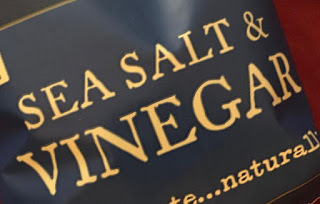 I think it started with the okra.Old friends are a precious commodity. Those who grow closer over the years are blessed. There is no doubt of that. But sometimes life gets in the way of maintaining a friendship, much less cultivating closeness.I hung with an interesting crowd in my early twenties. The first thing that attracted me to them was their sense of humor. In retrospect, it was a “thing” for us to insulate ourselves in a fish bubble containing the gang, where we looked out at the world with superior eyes and made fun of the idiocy of the rest of the world. It was fun, and pretty benign, but the attitude was promulgated on our vision of ourselves as being more intelligent than the rest of the world.Why did we think we were so special? So outside of the average? Even superior, although all of us would have denied the label? Well, we had a core of intellectual people. Most of them were employed as teachers. To me, these people were a form of bling. Hanging with them gave me some amount of pride.Over the years we all split off from the group but more or less kept in touch. Some people disappeared entirely, lost to the vagaries of life, growing older, moving, or acquiring new jobs. A couple of friends took the long, final walk. So there was attrition in the group.But up until yesterday, there were seven of us who had remained faithful in friendship...Continue Reading at our new site - ApocalypseObserver.com!
I think it started with the okra.Old friends are a precious commodity. Those who grow closer over the years are blessed. There is no doubt of that. But sometimes life gets in the way of maintaining a friendship, much less cultivating closeness.I hung with an interesting crowd in my early twenties. The first thing that attracted me to them was their sense of humor. In retrospect, it was a “thing” for us to insulate ourselves in a fish bubble containing the gang, where we looked out at the world with superior eyes and made fun of the idiocy of the rest of the world. It was fun, and pretty benign, but the attitude was promulgated on our vision of ourselves as being more intelligent than the rest of the world.Why did we think we were so special? So outside of the average? Even superior, although all of us would have denied the label? Well, we had a core of intellectual people. Most of them were employed as teachers. To me, these people were a form of bling. Hanging with them gave me some amount of pride.Over the years we all split off from the group but more or less kept in touch. Some people disappeared entirely, lost to the vagaries of life, growing older, moving, or acquiring new jobs. A couple of friends took the long, final walk. So there was attrition in the group.But up until yesterday, there were seven of us who had remained faithful in friendship...Continue Reading at our new site - ApocalypseObserver.com!
Published on July 10, 2019 18:18
June 27, 2019
Smarter Than Humans
©2019 C. Henry Martens
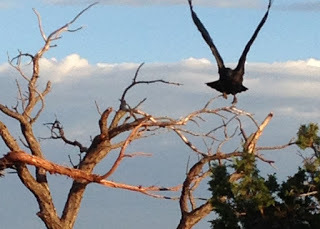
Human beings continue to learn. Well, some of us do. And one of the more striking lessons the more intelligent of us are learning is just how unintelligent our species is.
The rate of change in scientific knowledge is staggering, but along with that change is how yesterday's “knowledge” is today's opportunity for new thinking. Well-accepted theory has given way to questioned conclusions, leading to new understanding.
Dinosaurs are no longer big lizards but instead are as likely to be classed as early birds. Neanderthals are no longer distant cousins but are now established relatives... and they aren't the only ones. New thinking has led to the idea that dogs are not just descended from a single line but evolved separately in several geographical areas independently.
And our perceptions of learning and thinking and brain-involved abilities are changing dramatically as well. Our notion that brain size is necessary to intelligence has become so challenged that the only thing standing between that old conclusion and a new one recognizing higher intelligence in animals, large and small, is our pride. We are even beginning to understand that plants think, and that includes in many of the ways we perceive thinking in the animal kingdom... including ourselves.
Is our new knowledge going to eventually lead to recognition of animals (and who knows, plants?) being more intelligent than us in some ways?
Oh... perish the thought.
The human ego tends to shy away from any idea that humans aren't the center of the universe in every possible way. And I mean that literally. It wasn't too long ago that we humans thought the sun revolved around Earth because it was accepted that we human beings create meaning for all that exists. Without the superior creatures that are us, the universe would not be “right.”
(Yeah, right... heavy sarcasm)
So, let's consider any evidence that might contradict our self-aggrandized perceptions of superiority. Prepare yourself, because you may find this unpleasant.
I recently read an article saying that crows are being trained to pick up litter, specifically cigarette butts. This got me thinking, not about the intelligence of crows so much, but more about that humans are stupid enough to throw lit cinders from car windows after inhaling toxic fumes deep into their bodies. All while knowing the consequences. And we've been doing this for generations...
Makes one wonder, eh? Just to be fair, smoking is the low hanging fruit in searching for examples of human stupidity. The majority of smokers will agree that smoking is a less-than-well-thought-out activity. And if you don't smoke, don't go congratulating yourself on being more intelligent. We all engage in self-destructive behaviors on a regular basis.
So below I'll list some random thoughts about animals and the intelligence they exhibit, and you can consider if these intellectual capabilities are mere instinct or choice. You can also ask yourself if humans or other animals engage in these activities, and consider the relative intelligence of the animals that share in, or avoid, the activity.
Some animals are self-aware. Dolphins, elephants, some primates, can identify an image as their own in a mirror.
If you enclose a pig in a sufficiently large area, it will defecate in one corner so that it doesn't have to live in its own filth. I don't know of a single animal in the entire world that will actively seek out a pristine, beautiful spot to dump accumulated filth... as human beings do... instead of using free landfills.
Termites design and construct their cities using a cognizance of solar power, something that has eluded humankind until recently. Even as the advantages of solar value are recognized, there are people actively engaged in fighting to maintain less efficient industries.
Birds of the family Corvidae not only use tools but manufacture implements for specific uses they have never encountered. They may have a brain less than an inch wide, yet they tackle and succeed at tasks that stump primates easily. These birds also remember faces, recognizing individuals as attractive or dangerous or benign, and they do it with limited contact and generate long term memories.
Grazing animals, often considered dull and unimaginative, can solve complex puzzles. They open gates, find weak spots in fences, and can overcome obstacles intentionally designed by people to confine them.
Octopus, squid, and cuttlefish exhibit unusual curiosity and puzzle solving skills. They can mimic their surroundings through color and pattern variations and even by changing the texture of the skin. Not only do they mimic their background, but some choose to mimic other species either to entice interest or to deter it.
Squirrels excel at deception. When they know they are being observed, they mask their intentions and camouflage their activity in order to hide their caches of nuts. They also make three-dimensional maps to remember how to find their treasure troves.
Have you ever seen a trophy mounted in the den of a predator? I do know that cats will kill without necessity, but no animal species kills like humans do... to pump the ego.
Dogs exhibit a huge repertoire of communication skills, some exhibiting the ability to understand color, size, direction, shape, and names... among other things. The average owner lacks the ability to understand more than ten visual cues that a dog expresses.
Elephants remember places and routes they visited as infants, decades later. Few people can do more than visualize images of remembered places.
Pigeons and other birds can find their way to a location without the benefit of having experienced a journey or landmarks to guide them.
And let's not forget that plants think. Well-documented studies prove that plants observe, study, plan, and execute strategies. They care for family, invade opponents’ territories, and even sacrifice to ensure survival. Humans are only recently becoming cognizant of what plants do as intentional routine and have as long as they have existed. If a human understands the full impact of implications concerning plant intelligence, they might choose to eat meat and leave the plants alone.
These are but a few examples of intelligence recently realized yet remain beyond human capacity to understand. We are beginning to recognize animals speak in languages. Tool use, once believed to be exclusive to humans, is now recognized in more species every year.
We humans have always tended to overlook what was in front of our noses, mainly because we are self-centered. If an animal exhibited a behavior and there was no human use for that ability “to us,” then there was no reason to value what we couldn't put to use.
Lately, humans have become more introspective, becoming more questioning of our own abilities in relation to those species we share the planet with. We may not be as superior as we think.
Click here to receive the Apocalypse Observer Newsletter in your inbox
www.readmota.com
To comment, scroll down and type in your comment. Under Comment As, you can select Anonymous or Name/URL (you don't need to enter a URL). Then hit Publish.
Published on June 27, 2019 08:51
June 13, 2019
Domesticated Animals in the Apocalypse
©2019 C. Henry Martens
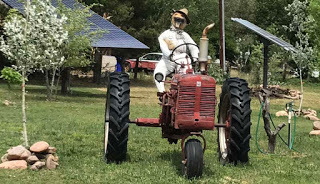
Planning on surviving the slow-motion Apocalypse? Ya know, just because we are surviving (so far) the slow-motion Apocalypse happening today doesn't mean a more fast-acting Apocalypse can't come out of the blue.
The big question?
What are the best strategies that will be applicable to any Apocalypse that happens?
One of the most likely scenarios is that humans disappear relatively quickly, leaving an abundance of resources behind. If resources dry up and humans are competing, then we still need options that will help us survive.
One of the resources that will be part of an Apocalyptic world... is domesticated animals.
What are they good for? Let's break it down...
Rats, hamsters, guinea pigs, rabbits: If you have a male and a female, you may be in better shape than a lot of other people. If the particular Apocalypse you are surviving is one involving competition for food, you have small animals you can keep hidden... and can feed and breed in the basement. They also produce high quality fertilizer for your very important garden. With a little planning and some diligence, you can turn small animals into a trading empire.
Sheep, alpacas, llamas, goats: All of these animals are edible. So short term, they can feed you and the family. A breeding group of animals is relatively easy to care for as long as you have good fences. Not just fences to keep the animals in, but also to keep predators out. Otherwise, you can shepherd your animals constantly. Llamas will protect the herd from canids, but without a Llama they are vulnerable without constant shepherding. There are breeds of dogs that will fix on a herd of sheep, goats, or alpacas and protect them, and donkeys have been used as well. Nothing except a gun will stop a human predator.
Sheep, alpacas, llamas, and goats also give milk. Goats will produce the most, but they also have a high degree of self-destructiveness built into them. They will tangle themselves in fences, strangle themselves if tied, and they get worms that will kill them. Leather and fibers from these animals could be valuable as trade goods, but more likely meat and milk and immature animals are your best bet for barter. Llamas and goats have been used throughout history as pack animals or to pull carts. If there is a lot of snow you will need to stock up some kind of forage for winter, but these animals are hardy in terms of feed. They will usually fend for themselves pretty well. Oh... and billy goats stink... BAD. If you keep a billy goat plan on that.
Chickens, ducks, geese, and turkeys: Poultry is great because it stays close to home. Once birds are acclimated to an area by containing them for a week and feeding them, they remain loyal to the area. It helps to feed them once a day, and it doesn't take much to keep them happy. All poultry will forage effectively as long as they can scratch the ground. Chickens in particular will eat anything. All of these birds lay eggs, and they are all good to eat. Chickens will outperform the rest, but some domesticated ducks are close in terms of egg production. Geese and turkeys are better used for meat, so if they lay a clutch and will set them, let them hatch their eggs out. All poultry is highly susceptible to predation. A good dog that is acclimated to poultry and won't eat your flock is a great asset. At night it is best to coop your birds. Skunks and raccoons will dig into a coop or even reach through the wire to eat birds piece by piece. Be sure your coop is tight and big enough to keep birds away from the wire. Chickens have been bred to be less broody. Whatever you do, don't eat a hen that will sit on eggs. They will be worth their weight in gold. It is best to keep a mixed flock and I always keep a few broody hens and a rooster from a breed that is known for producing broody hens.
Pigs: Pigs can be raised outside of fences if you have something that will keep them interested in sticking around. Otherwise proper fences are essential. Pigs will eat anything. In an Apocalypse, this may become a valued trait. Pork cures easily and keeps well as long as it is kept cool.
Beef and dairy cattle: All cows that produce a calf give milk. Beef cows give milk, and dairy cows give milk. A small, single family group can get enough milk from a good beef cow to fill their needs. The trick is to find and gentle the right cow. Docile animals are easy to spot and worth the time to tame. Some good grain and a healthy scratch in the right place, and getting an animal used to standing in a headgate/stanchion, will result in an animal you can depend on to provide a calf every year and enough milk to drink and make butter.
Castrating a male calf is easy if done very young, and will produce an animal that can be used for years as a drought animal, pulling a plow or a cart, and in the end be used as high quality meat. A draft animal has a lot of uses after the fossil fuels run out. Dairy cows give so much milk that the calf would most likely have to be separated from the cow. Most dairy cows will give far more milk today than a family can use. Unless you have a market for milk and want to drain a giant udder every day twice a day, stick to a docile beef cow. Cattle subsist well on grass and can be worked hard. The mother cow will usually keep predators at bay pretty well, but best keep an eye on young calves for a few weeks. Beef can be salted, smoked, and dried to preserve it.
Horses, ponies, mules, donkeys: All equines are edible. Sometimes people seem to forget these kinds of things because they aren't used to thinking in survival terms. Miniature animals in an Apocalypse are best used to grace a plate. They are a liability if they are kept as pets. Horses from fourteen hands (a hand is four inches) to seventeen hands will provide a comfortable riding horse for the average person. The larger the animal, the more it can usually carry. Animals between ten and thirteen hands make great pack animals. Mules forage easier than horses and can be worked harder without losing condition. Mules are the product of a male donkey and a female horse so are sterile. Don't expect any offspring. Donkeys are usually docile and small enough to be managed easily, but they can be frustratingly stubborn. The more you handle a horse or mule at a young age, usually the easier they are to train. Just don't spoil them by allowing bad behaviors that are difficult to untrain. All of the equines can be ridden, used to pull carts or plows or a travois, or to power a mill or other machinery to make flour or electricity. Equines survive well on almost any kind of vegetation, but they will also destroy pasture. If you have limited grass, it is best to keep them off of it and harvest hay or anything else to feed your horse. Horse, mule, and donkey can be made into jerky, salted, or smoked.
Cats: Cats can be eaten. They produce large litters and you don't need a lot of them unless you are harvesting grain and storing it. A female cat will attract male cats that will breed her and can be trapped to go into the stew pot. Apocalypse eating at its best. Cats are obligate carnivores, so if you have extra offal from butchering anything you can dry it to be used as cat food in lean months.
Dogs: Probably the most useful, versatile animal you can have is a dog. But mainly in protecting yourself, your property, or other animals. Dogs can be used to hunt, to kill vermin, to keep yourself warm on cold nights, and in a pinch, to fill your belly. A trainable dog is an asset if you can train it. An untrained dog is practically worthless and can even be a liability. Dogs can subsist pretty well on table scraps and the offal from butchering animals. A good dog will listen to you in the dark times.
I hope I've given you something to think about. Surely, I haven't covered the subject in depth, but even people who have never had an animal seem to have some intuitive capability to figure animals out. Just remember the priority in any Apocalyptic scenario... an animal is a tool to assure your own survival. The entire reason animals were domesticated originally in prehistoric times, and since, was to aid human beings in the game of survival. They are not your children, or even your friends, when it is time to eat.
Click here to receive the Apocalypse Observer Newsletter in your inbox
www.readmota.com
To comment, scroll down and type in your comment. Under Comment As, you can select Anonymous or Name/URL (you don't need to enter a URL). Then hit Publish.
Published on June 13, 2019 07:31
May 30, 2019
Lost and Found
©2019 Kari Carlisle
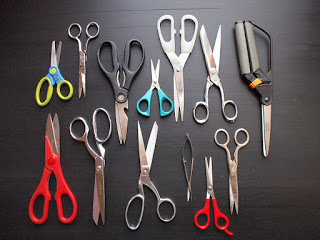 courtesy of commons.wikimedia.com
courtesy of commons.wikimedia.comFeeling depressed? Stressed? Frustrated? Angry? Invariably, the cause of any negative feelings boils down to one word: loss.
We lose things all the time. Mostly, loss is a petty annoyance. The temporary loss of keys, reading glasses, scissors, especially when one needs them most, causes the blood to simmer a bit. But loss doesn’t stop there. We can lose time, money, jobs, homes, and health. More than petty annoyances, these types of losses can be life-changing, even devastating. There are permanent losses, too… the loss of pets, friends, and family members.
We fear change, which is what loss is. Change in the status quo. Whatever we lose, whether annoying or overwhelming, temporary or permanent, causes change, and the better adapted we are to change, the better we respond to loss.
I’ve experienced a lot of loss in the last few months. Possibly the most difficult to deal with was the loss of my left hand for several months. I’m right-handed, and everyone, including myself, was at least grateful for my ability to use my right hand. But that slight grace was small comfort. That loss went beyond mere inconvenience. A shattered bone in one finger made me lose my independence. Constant pain and swelling meant I had to keep my hand elevated for weeks, and I lost my ability to walk my dogs and go for hikes because any exercise, any increase in heartbeat, meant throbbing pain that could not be alleviated. Because I couldn’t exercise, I lost my level of fitness and gained weight. I lost my typing speed. I lost the ability to open a bottle of wine. I lost so much.
When we lose things, we lose what brings us happiness. One of the things I enjoy most in life is hiking with my dogs, something I have not been able to do in months. But I am one who is always looking out for light at the end of the tunnel, and I know I will be able to do that again soon, though now, it’s too hot in the Arizona desert. But not everyone looks for or sees the light at the end of the tunnel. That light is what we may find after loss.
One’s perspective on loss of any kind has everything to do with how and what they may find. The natural response to loss is grief, and there’s no reason to deny the experience. Loss is painful, and grief helps us work through the pain. If we sit in denial, we lose the benefits that grief provides including gratitude and closure. The grief process allows us to process the loss and move on to find the next positive thing in our lives.
I suspect that improper grief processing can lead to a deeper fear of loss/change. We all have methods for mitigating loss, everything from buying a dozen pair of scissors to buying life insurance. These methods can’t prevent loss, but they help soften the blow of loss. But fear that results in a phobic pattern of loss prevention can lead one down the path of mental illness. Loss of sanity.
My shattered finger could have shattered so much more and in some respects has. Just walking my dogs or using stairs leads to anxiety about falling. Acknowledging the anxiety and working – hard – to move past it does help. Dwelling on loss can lead to victim mentality, and one must be self-aware to avoid falling into that trap.
On the other hand, suppressing the negative emotions is not healthy, and dealing with them is a necessary part of the grief process. One must handle loss with thoughtfulness, mindfulness, and prayerfulness and sometimes head on by holding responsible those who may have caused the loss. Without the proper processing of grief, those negative emotions have a tendency to come out one way or another. This is why “anger management” is more than just controlling anger and other negative emotions. It’s about the appropriate expression of one’s feelings, not holding them in and not blowing up.
My finger will likely never fully recover, and I still need to decide, without my emotions taking over, how I’m going to handle this loss. Loss is part of life, some losses worse than others, and how we handle them dictates what we learn and what comfort we find.
Click here to receive the Apocalypse Observer Newsletter in your inbox
www.readmota.com
To comment, scroll down and type in your comment. Under Comment As, you can select Anonymous or Name/URL (you don't need to enter a URL). Then hit Publish.
Published on May 30, 2019 09:31
May 16, 2019
Wild Horses vs the Environment
©2019 C. Henry Martens
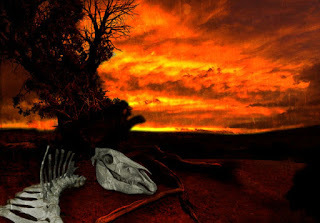
Horses are great animals. Beautiful, useful, and easy to be friends with if you find the right one.
But…
There is no such thing as a wild horse. Horses are domesticated animals, changed by human beings to work for the purposes of human beings. Because of the changes… they are not wild, and they don’t survive as well as a truly wild horse would in a natural environment.
So, what are horses if they aren’t wild?
They are feral.
But to the question about damage to the environment.
Most ungulates have bottom teeth and a thick pad of gum with no teeth on the top front of their mouth. This dental configuration doesn’t allow the animals to destroy grass as easily as a top and bottom front tooth configuration.
The exception?
Horses…
They have teeth top and bottom.
They use them, especially when grass is sparse, to clip vegetation right to the ground. This kills grass.
Horses are also single-toed animals. Single toes act like grass killing tools. They cut up the soil, getting right down to the roots and exposing them.
If you place all the various types of ungulates in identical pastures, same ground cover, same size… horses will destroy the vegetation turning their space into dirt where cattle or sheep or even hogs will still have something to eat.
Horses will turn acres into dirt where other animals will have green grass after the same amount of time.
Feral horses should not be allowed in the wild spaces.
Environmental reasons?
You bet.
But my main reason for removing horses is because feral horses live terribly harsh lives. If an owner treated a horse as animals live in the wild… they would be arrested and their animals confiscated. Half of the foals born in any year die before they are a year old. The mares bear a foal every year. They survive well enough to overpopulate, but they die lingering, prolonged deaths. The watering holes feral horses frequent are surrounded by skeletons lying in the sagebrush that tell tales of hoof, leg and teeth injuries that led to death.
Horses deserve better.
We changed them. We owe them…
Click here to receive the Apocalypse Observer Newsletter in your inbox
www.readmota.com
To comment, scroll down and type in your comment. Under Comment As, you can select Anonymous or Name/URL (you don't need to enter a URL). Then hit Publish.
Published on May 16, 2019 07:25
May 2, 2019
12 Fun and Unusual Ways to Celebrate Star Wars Day
©2019 Kari Carlisle
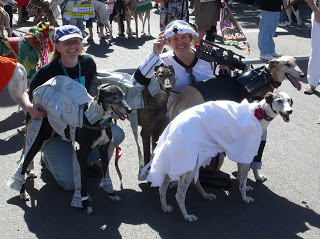
Star Wars fans have designated May 4th as an unofficial, annual Star Wars Day to celebrate their beloved franchise comprised of movies, TV shows, novels (graphic and otherwise), video games, and oh, so much more. The date is a play on the famous line, “May the Force be with you,” i.e. “May the Fourth be with you.” The date itself has no significance to the movie franchise, but it’s a fantastic excuse to be nerdy for a day.
If you enjoy the hit sitcom, Big Bang Theory, you may have seen the episode when the group planned the Star Wars Day celebration around a marathon run of the movies, only six at the time, although some conflict over proper viewing order ensued. A surprise Death Star-shaped cake added to the festivity. While such Star Wars Day activities could be fun, I’d like to suggest a few alternative ideas, some of which may be fun for the whole family, even the non-fans among us.
Lightsaber fights – pick up some toy lightsabers wherever Star Wars toys are sold, and head to a park or other open space, and have at it! You’ll release some pent-up energy, get a little exercise, and maybe attract some attention. Don’t be surprised if others join you.
Local events – search online for Star Wars Day events near you. Retail shops, watering holes (you know what I mean), restaurants, museums, etc. have learned to capitalize on the day with discounts and programs. Pick one or two and check them out.
Music – Bum Bum Bum, Bum-de-dum, Bum-de-dum. Crank the movie theme while you clean your house. Seriously, you will ENJOY cleaning your house! Oh, and be sure to dance during the cantina music.
Comedy – YouTube has a plethora of parodies to watch, not to mention the stand-up, Saturday Night Live skits, and more. Just search “Star Wars comedy” and start watching the results that interest you. The first parody, and still my favorite is Hardware Wars. And I still sometimes get Bill Murray’s lounge act song stuck in my head… “Star Wars, nothing but Star Wars….”
Cookies and milk – Blue milk, that is. Bake some cookies and add a little blueberry juice to your choice of milks. Then sit down and watch the Star Wars movie that started it all.
Gaming – Whether or not you consider yourself a gamer, you can try playing one of many Star Wars games available on a number of platforms. No gaming devices? Just go to www.starwars.com, and you can play some games for free online.
Cosplay – You can cosplay yourself or search for a local Star Wars cosplay group to see where they are appearing. A real fan surely has a Star Wars costume or two lying around. If not, head to the thrift store and piece something together. If you can’t find anything, at least pin towels around the kids and let them lightsaber fight with paper towel tubes.
Embarrass your dog – Act now, and you can get a dog costume in time for the big day. Walk around the neighborhood with your dogs dressed as Yoda, Princess Leia, or At-Ats. Better yet, take them to a local assisted living/care facility to delight the residents. Call ahead to make sure the facility allows it.
Watch Star Wars… - in another language. YouTube has many scenes you can watch in different languages. If you are fluent or even less than fluent in another language, try watching the whole movie. It should be interesting to hear how some of the lines are translated. Fun Fact: Star Wars is the first movie to be translated into the Navajo language.
Fan fiction – pick your favorite Star Wars characters and write a short story with them. It doesn’t have to follow canon (the rules of the Star Wars universe) or even good. Just have fun putting them in a new setting or fighting a new foe.
Plan a trip – Disney is opening up their new Star Wars theme land. Star Wars Day will be the perfect day to sit the family down and start preparing for the trip. Search YouTube for the “proper” way to surprise your kids with a Disney vacation.
Subtle homage – Wear your Star Wars t-shirt. Seriously, it’s the least you can do without doing nothing.
Already have plans? Tell us what they are in the comments.
Happy Star Wars Day! May the Fourth be with you!
Click here to receive the Apocalypse Observer Newsletter in your inbox
www.readmota.com
To comment, scroll down and type in your comment. Under Comment As, you can select Anonymous or Name/URL (you don't need to enter a URL). Then hit Publish.
Published on May 02, 2019 08:42
April 18, 2019
Short Story: Short People Rule
©2019 C. HenryMartens
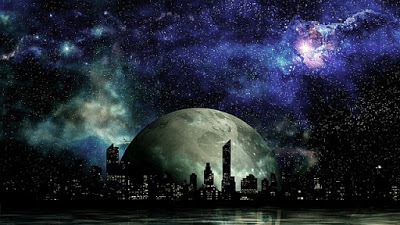
Watching the line of tiny people walking down the NASA Space Center hall, Gunnar Samuelson snickered. He always found humor in the sight of so many short people in a group. His towering height of six feet eight inches and his intimidating weight of almost three hundred pounds made him feel like a giant among men, but in the company of his students, he felt enormous... a giant... and powerful. The feeling was seductive, and he had succumbed to his baser instincts more frequently as time passed.
He couldn't help it, he guffawed loudly, thinking of how these people sat in his classroom, every leg too short to reach the floor, tiny feet kicking in the air.
Several of the people in the rear of the group turned to look, and he noticed their grimaces as they recognized him.
Gunnar didn't care. The little weaklings would be gone soon enough. Another six weeks and they would be launched on the spacecraft designed for their tiny dimensions, a cost-cutting measure that allowed for a full complement of just under a thousand in a ship that would have weighed almost half again as much if carrying average-sized people.
§ Looking back at the big man laughing at them, several of his students wondered how the big man they all called “Ogre” behind his back had become a NASA astrobiologist. Because astrobiology was a necessary discipline required for their journey and future colonization of a far planet, those that were required to sit through Professor Samuelson's lectures learned to rue their time under his thumb.
Several harbored a deep and abiding grudge.
§
Lift off was flawless, and Signer Carlson heaved a heavy sigh of relief. Signer had risen through the ranks to be chosen Ship's Captain, and he felt the weight of his responsibility even as true weightlessness engulfed him for the first time. He was determined to keep a journal and intended to make it as genuine and honest as possible.
The transition was going to be interesting. None of his crew had ever been to space, but they were the survivors of a rigorous selection process. Every soul on board was advanced from an original group of over five thousand individuals. Each of the original group was pre-selected from the general population for intellectual competency and genetic health, but the culling process had done its best to be sure each of the remaining crew was mentally stable and especially mentally tough. A several-generation voyage was no place for weak people.
And then, of course, there was that other thing. No one on board could be over five feet tall, weighted heavily toward those as short as possible. The average man on board was four foot seven and a quarter, and the women, four foot four and a half.
Size mattered on a ship designed to travel great distances between stars.
§
The voyage progressed as expected. In the beginning, the first-generation astronauts had trouble adjusting in several ways. Artificial gravity took some getting used to. When the soil-free gardens experienced a loss of fertility, people complained about the lack of variety in fresh vegetables. Perhaps the most surprising discomfort was getting used to being normal height. Even after the ten-year training period required on Earth, in environs crowded with small people, individuals had troubling thoughts as they adjusted to being in a population devoid of giants.
Occasionally, there were conceptions that promised a taller person than the ship would comfortably accommodate. As everyone was allotted a single birth, these pregnancies were terminated early, and another conception opportunity was encouraged. After several generations, tall genes diminished.
§
Ten generations into the voyage, more or less, the ship was fast approaching the intended destination. All evidence suggested a thriving ecology, the seed ships having spread their germs over the preceding two centuries. There were even signs that primitive plants were already spreading across the coastlines.
People were getting excited.
§
“I was reading through my grandfather's diary last night.”
Purdy Kantor turned to listen. She smiled at Willor Carlson, melting his heart.
“Your G'pa was the first Captain, right?” Purdy asked.
“Yeah, and of course he was born and educated on Earth, so he wrote a lot about his life there. I came across some interesting ideas.”
Purdy stayed silent but encouraged Will by smiling.
“He talked about how he was short.”
“Short? Why would he say that? In school they never mentioned anything.”
Will hesitated. The information he was about to share was startling.
“Well, apparently people on Earth were big.”
“Big? What do you mean? How big could they be? You mean tall? Because your G'pa said he was short?”
Rolling her eyes, Purdy seemed unconcerned. Maybe even lacking belief.
“Yeah, taller. The people on Earth averaged over a foot taller than us. Some of them were even two feet taller.”
“Wow,” Purdy's eyes got big, “How did they live like that? Didn't they bump their heads a lot?”
Laughing, Will explained what Purdy must have forgotten about planetary living.
“Ha, Silly Girl... they lived with a sky. They could even climb mountains. Remember what the robo-teach said about being out-of-doors?”
“Oh yeah, now I remember. But heavy limerky, those people were really tall!”
“Limerky, yes!” exclaimed Will. “We would all be short. And there were some bad things about being short. Short people were penalized and even made fun of.”
Furrowing her brow, Purdy considered. She didn't like what Will was suggesting.
Reassuring Purdy, Will explained that he was going to meet with the current Ship's Captain. He had already made the appointment. His Grandfather's journal would inform the current generation in ways the robo-teach had failed.
§
“As you all know, I've shared Captain Carlson's private thoughts with everyone here.”
Perusing the seated Ship's Legislature gathered in the conference room, Captain Melody recognized the concerns expressed on every face.
“It seems we have a decision to make. The stored embryos supplied by Earth are all genetically larger than us, the ship's complement. After reading about the torture short people endured at the hands of tall people on Earth, especially at the hands of that Ogre fellow that has embryos stored on board, I'm going to suggest we either terminate them all or just continue storing them. Our current population only varies three inches in height, male and female. There is no height discrimination. There is no “short man syndrome” as the former captain describes. But if we reawaken tall people, there will be problems.’
“Our geneticists assure me that we have enough miniature-by-Earth-standards animals that we can be a viable colony without awakening the full-sized livestock that would be problems to handle, so we will awaken the ponies, small cows and pigs, etc. as we deem necessary. We'll also awaken full sized chickens, ducks, and turkeys, etc. but probably not ostriches or rheas. In any case, this vote isn't really about the animals. Those decisions can wait for later discussions.”
Captain Melody hesitated. The vote would determine not only the future for their own children but also the success of much of the effort Earth had put into saving their own progeny. The captain hesitated because either way, the decision would be sad. But with confidence, he continued because he already knew what the vote would be.
“So, fellow citizens of a new civilization and society... a yes will be in favor of a world with our current genetics and our current heights as the norm. Nays will be a vote to reawaken the tall people and introduce them among us.”
“All in favor?”
§§§
Click here to receive the Apocalypse Observer Newsletter in your inbox
www.readmota.com
To comment, scroll down and type in your comment. Under Comment As, you can select Anonymous or Name/URL (you don't need to enter a URL). Then hit Publish.
Published on April 18, 2019 06:04
April 4, 2019
Suffragettes In Space
©2019 Kari Carlisle

Last week was to be the first all-female spacewalk in history. Women have been spacewalking for 34 years, but never without a man. Astronauts Anne McClain and Christina Koch were scheduled for the history-making spacewalk when McClain decided a medium sized spacesuit fit better than a large. The problem: Koch can only wear a medium suit, and there is only one medium suit on the International Space Station (ISS).
People around the world were disappointed. I was disappointed. Social media exploded with criticism. Saturday Night Live made fun of the situation. Despite the backlash, NASA’s decision had nothing to do with gender. The change was made with safety in mind.
If you wear a shirt to work that’s a tad too large, you might be a little uncomfortable, maybe somewhat self-conscious, but you’re not going to die. That’s because you don’t work in the vacuum of space.
Spacesuits are not tailored to fit individuals. There are hundreds of astronauts and a limited number of suits available on the ISS that must be shared. When McClain realized she was safer in a medium suit, NASA made the right call.
It’s not a matter of taking a suit back to the sewing machine or whipping up a new one. They cost about $2 million each, and it takes about 2 and a half years to make one. If you’re not happy about the number of available suits, blame budget cuts, not misogyny.
While it is a shame that we won’t see an all-female spacewalk for a while, the greater shame is that there was little to no fanfare when women finally made up 50% of astronauts within the last few years. In 99 years, we’ve come from gaining the right to vote alongside men to going to space alongside men. I don’t feel as strongly about all-female spacewalks, as cool and historic as that would be, so much as earning equal pay for equal work for women and minorities. In that regard, we still have a long way to go.
Click here to receive the Apocalypse Observer Newsletter in your inbox
www.readmota.com
To comment, scroll down and type in your comment. Under Comment As, you can select Anonymous or Name/URL (you don't need to enter a URL). Then hit Publish.

Last week was to be the first all-female spacewalk in history. Women have been spacewalking for 34 years, but never without a man. Astronauts Anne McClain and Christina Koch were scheduled for the history-making spacewalk when McClain decided a medium sized spacesuit fit better than a large. The problem: Koch can only wear a medium suit, and there is only one medium suit on the International Space Station (ISS).
People around the world were disappointed. I was disappointed. Social media exploded with criticism. Saturday Night Live made fun of the situation. Despite the backlash, NASA’s decision had nothing to do with gender. The change was made with safety in mind.
If you wear a shirt to work that’s a tad too large, you might be a little uncomfortable, maybe somewhat self-conscious, but you’re not going to die. That’s because you don’t work in the vacuum of space.
Spacesuits are not tailored to fit individuals. There are hundreds of astronauts and a limited number of suits available on the ISS that must be shared. When McClain realized she was safer in a medium suit, NASA made the right call.
It’s not a matter of taking a suit back to the sewing machine or whipping up a new one. They cost about $2 million each, and it takes about 2 and a half years to make one. If you’re not happy about the number of available suits, blame budget cuts, not misogyny.
While it is a shame that we won’t see an all-female spacewalk for a while, the greater shame is that there was little to no fanfare when women finally made up 50% of astronauts within the last few years. In 99 years, we’ve come from gaining the right to vote alongside men to going to space alongside men. I don’t feel as strongly about all-female spacewalks, as cool and historic as that would be, so much as earning equal pay for equal work for women and minorities. In that regard, we still have a long way to go.
Click here to receive the Apocalypse Observer Newsletter in your inbox
www.readmota.com
To comment, scroll down and type in your comment. Under Comment As, you can select Anonymous or Name/URL (you don't need to enter a URL). Then hit Publish.
Published on April 04, 2019 05:30
March 21, 2019
The Zoo Dilemma
©2019 C. Henry Martens
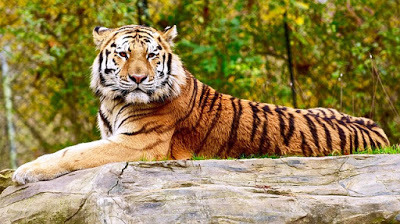 Courtesy of PixabayDo tigers have an opinion about zoos?
Courtesy of PixabayDo tigers have an opinion about zoos?
Maybe… maybe not.
One thing I know. If I think about it as a human, I get different answers than if I think about it as a tiger.
There are certainly trade-offs.
In the wild, big cats have vast territories. I suppose they may enjoy exploring their domains and are interested in the differences they find in each circuit of their territory.
But maybe not.
Perhaps they pad through their chosen area complaining to themselves that prey is scarce, and they would rather walk less and eat more.
Maybe they stress over strange scents and new scratch marks from unknown claws.
I know there are animals in the world that are motivated more by the availability of food than by freedom to move about. I suspect that most domesticated predators were inclined to give up their freedom in return for easy meals.
And maybe a scratched back.
I see no reason to think that tigers are much different.
Do tigers wander great distances if they have a source of food available in one location?
Maybe they do. But I’d bet the area diminishes with the degree of appeal to the food source.Maybe tigers in zoos miss hunting. That I don’t doubt.
Personally, I think zoos should provide hunting opportunities to predator species.
But just as humans worry about confined cats being unhappy, they would cringe at a tiger being allowed to exercise its gorier instincts. That seems a little hypocritical to me.
One thing… tigers live far longer in zoos and with far less physical trauma. They are injured less.
Trade offs…
The TygerWilliam Blake, 1794
Tyger Tyger, burning bright,In the forests of the night;What immortal hand or eye,Could frame thy fearful symmetry?
In what distant deeps or skies.Burnt the fire of thine eyes?On what wings dare he aspire?What the hand, dare seize the fire?
And what shoulder, & what art,Could twist the sinews of thy heart?And when thy heart began to beat,What dread hand? & what dread feet?
What the hammer? what the chain,In what furnace was thy brain?What the anvil? what dread grasp,Dare its deadly terrors clasp!
When the stars threw down their spearsAnd water'd heaven with their tears:Did he smile his work to see?Did he who made the Lamb make thee?
Tyger Tyger burning bright,In the forests of the night:What immortal hand or eye,
Dare frame thy fearful symmetry?
Click here to receive the Apocalypse Observer Newsletter in your inbox
www.readmota.com
To comment, scroll down and type in your comment. Under Comment As, you can select Anonymous or Name/URL (you don't need to enter a URL). Then hit Publish.
 Courtesy of PixabayDo tigers have an opinion about zoos?
Courtesy of PixabayDo tigers have an opinion about zoos?Maybe… maybe not.
One thing I know. If I think about it as a human, I get different answers than if I think about it as a tiger.
There are certainly trade-offs.
In the wild, big cats have vast territories. I suppose they may enjoy exploring their domains and are interested in the differences they find in each circuit of their territory.
But maybe not.
Perhaps they pad through their chosen area complaining to themselves that prey is scarce, and they would rather walk less and eat more.
Maybe they stress over strange scents and new scratch marks from unknown claws.
I know there are animals in the world that are motivated more by the availability of food than by freedom to move about. I suspect that most domesticated predators were inclined to give up their freedom in return for easy meals.
And maybe a scratched back.
I see no reason to think that tigers are much different.
Do tigers wander great distances if they have a source of food available in one location?
Maybe they do. But I’d bet the area diminishes with the degree of appeal to the food source.Maybe tigers in zoos miss hunting. That I don’t doubt.
Personally, I think zoos should provide hunting opportunities to predator species.
But just as humans worry about confined cats being unhappy, they would cringe at a tiger being allowed to exercise its gorier instincts. That seems a little hypocritical to me.
One thing… tigers live far longer in zoos and with far less physical trauma. They are injured less.
Trade offs…
The TygerWilliam Blake, 1794
Tyger Tyger, burning bright,In the forests of the night;What immortal hand or eye,Could frame thy fearful symmetry?
In what distant deeps or skies.Burnt the fire of thine eyes?On what wings dare he aspire?What the hand, dare seize the fire?
And what shoulder, & what art,Could twist the sinews of thy heart?And when thy heart began to beat,What dread hand? & what dread feet?
What the hammer? what the chain,In what furnace was thy brain?What the anvil? what dread grasp,Dare its deadly terrors clasp!
When the stars threw down their spearsAnd water'd heaven with their tears:Did he smile his work to see?Did he who made the Lamb make thee?
Tyger Tyger burning bright,In the forests of the night:What immortal hand or eye,
Dare frame thy fearful symmetry?
Click here to receive the Apocalypse Observer Newsletter in your inbox
www.readmota.com
To comment, scroll down and type in your comment. Under Comment As, you can select Anonymous or Name/URL (you don't need to enter a URL). Then hit Publish.
Published on March 21, 2019 06:00
March 7, 2019
Self-Driving Vehicles Scare the Crap Out of Me
©2019 Kari Carlisle
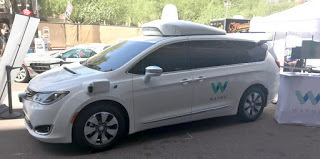
For the past thirteen years, I have been spoiled. The first eight of those years, I had a thirteen-mile, twenty-minute commute to work with no traffic. The worst thing I had to worry about was a cattle drive in the road. The following five years, I had no commute. I lived less than a fifth of a mile from my office.
I am no longer spoiled with an easy commute. Back in the big city, I take 45 minutes to get to my office with no traffic. During rush hour, or I should say rush four hours, I have an hour commute. Longer if there’s an accident.
I use my iPhone liberally to gauge the traffic and select my route. With an unlimited data plan, I can use Siri daily to give me directions even though I know where I’m going. She can reroute me if there’s an accident or other road blockage. Just this week, she shaved five minutes off my commute by sending me onto the freeway frontage road for several miles.
Siri is not perfect, though. While I saved five minutes on one commute, I lost 20 minutes trying to find a doctor’s office… TWICE in the last few weeks. Which makes me really worried about self-driving vehicles.
Just years away from becoming ubiquitous, self-driving vehicles are now undergoing testing in my urban area as well as others. There are a few things that concern me about the future of commuter travel and one thing that really excites me.
The first concern I have as you’ve probably already guessed is getting where I want to go. Are those self-driving cars using the same navigation systems as what is currently in use? If so, we’re in trouble. I have been directed to the wrong side of the street, the wrong block, and even the wrong side of town. We still have to be smarter than navigation to be certain we’ll arrive at our destination.
Another concern is safety. While safety is being touted as a selling point because self-driving vehicles can respond faster than a human, there have been fatalities, albeit not always the self-driving car’s fault, but I really would like to know that my car is not going to run someone over or decide that my well-being is secondary to, say, a beer truck. Pardon my desire for self-preservation.
I’m also concerned about the ramifications of self-driving vehicles for the future of personal privacy and freedom. Once we have a bunch of self-driving vehicles around, and they’re all communicating with each other, I expect next we’ll be making strides toward smart cities where a central A.I. knows where everyone is going and remotely manages all traffic signals and directs the routes of all the vehicles.
Next thing you know, we’ll be required to carpool with strangers, use public transit, and begin our commute within narrow time windows in order to serve the collective. Obviously, we do a lot of that now by choice – it’s the potential for a directive that bothers me. We’ll be a massive swarm of ant drones being directed by the queen A.I. Someday, we’ll be required to live along convenient (for the system) travel routes, and moving or changing jobs will be regulated.
I hope I’m wrong. I hope that population density does not lead to such draconian controls, though other factors such as seemingly benevolent crime control may. If it does come to that, I don’t expect it in my lifetime.
Which leads me to what excites me. With a self-driving car, I’m looking forward to a commute during which I can get some work done, read, or watch a movie. That and not have to deal with road rage.
Click here to receive the Apocalypse Observer Newsletter in your inbox
www.readmota.com
To comment, scroll down and type in your comment. Under Comment As, you can select Anonymous or Name/URL (you don't need to enter a URL). Then hit Publish.

For the past thirteen years, I have been spoiled. The first eight of those years, I had a thirteen-mile, twenty-minute commute to work with no traffic. The worst thing I had to worry about was a cattle drive in the road. The following five years, I had no commute. I lived less than a fifth of a mile from my office.
I am no longer spoiled with an easy commute. Back in the big city, I take 45 minutes to get to my office with no traffic. During rush hour, or I should say rush four hours, I have an hour commute. Longer if there’s an accident.
I use my iPhone liberally to gauge the traffic and select my route. With an unlimited data plan, I can use Siri daily to give me directions even though I know where I’m going. She can reroute me if there’s an accident or other road blockage. Just this week, she shaved five minutes off my commute by sending me onto the freeway frontage road for several miles.
Siri is not perfect, though. While I saved five minutes on one commute, I lost 20 minutes trying to find a doctor’s office… TWICE in the last few weeks. Which makes me really worried about self-driving vehicles.
Just years away from becoming ubiquitous, self-driving vehicles are now undergoing testing in my urban area as well as others. There are a few things that concern me about the future of commuter travel and one thing that really excites me.
The first concern I have as you’ve probably already guessed is getting where I want to go. Are those self-driving cars using the same navigation systems as what is currently in use? If so, we’re in trouble. I have been directed to the wrong side of the street, the wrong block, and even the wrong side of town. We still have to be smarter than navigation to be certain we’ll arrive at our destination.
Another concern is safety. While safety is being touted as a selling point because self-driving vehicles can respond faster than a human, there have been fatalities, albeit not always the self-driving car’s fault, but I really would like to know that my car is not going to run someone over or decide that my well-being is secondary to, say, a beer truck. Pardon my desire for self-preservation.
I’m also concerned about the ramifications of self-driving vehicles for the future of personal privacy and freedom. Once we have a bunch of self-driving vehicles around, and they’re all communicating with each other, I expect next we’ll be making strides toward smart cities where a central A.I. knows where everyone is going and remotely manages all traffic signals and directs the routes of all the vehicles.
Next thing you know, we’ll be required to carpool with strangers, use public transit, and begin our commute within narrow time windows in order to serve the collective. Obviously, we do a lot of that now by choice – it’s the potential for a directive that bothers me. We’ll be a massive swarm of ant drones being directed by the queen A.I. Someday, we’ll be required to live along convenient (for the system) travel routes, and moving or changing jobs will be regulated.
I hope I’m wrong. I hope that population density does not lead to such draconian controls, though other factors such as seemingly benevolent crime control may. If it does come to that, I don’t expect it in my lifetime.
Which leads me to what excites me. With a self-driving car, I’m looking forward to a commute during which I can get some work done, read, or watch a movie. That and not have to deal with road rage.
Click here to receive the Apocalypse Observer Newsletter in your inbox
www.readmota.com
To comment, scroll down and type in your comment. Under Comment As, you can select Anonymous or Name/URL (you don't need to enter a URL). Then hit Publish.
Published on March 07, 2019 04:29



